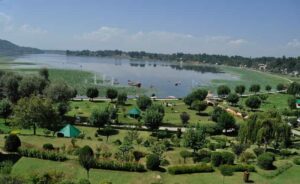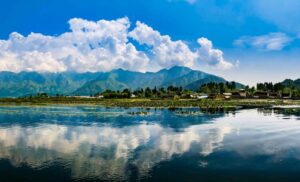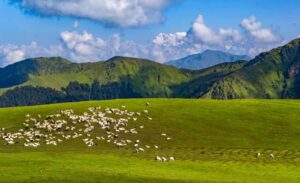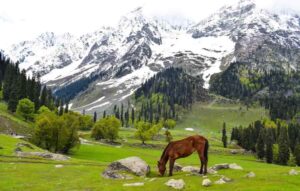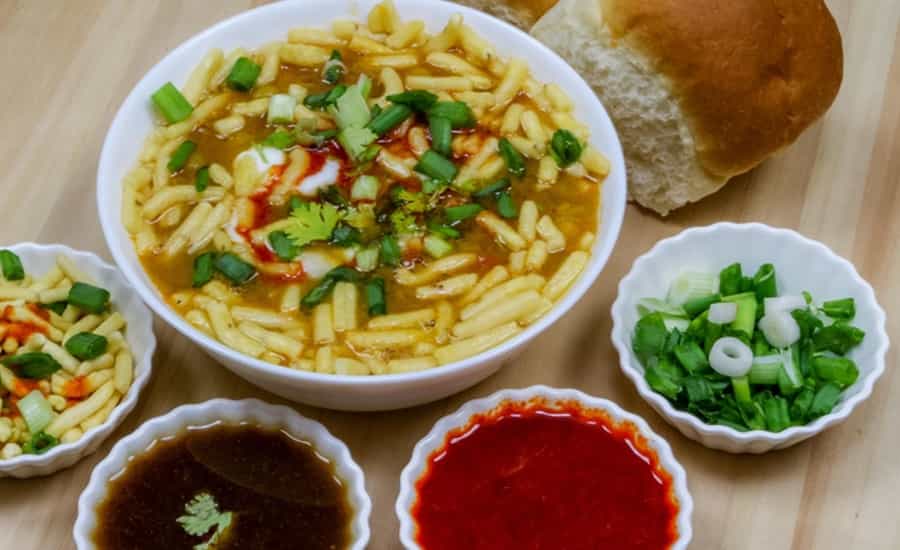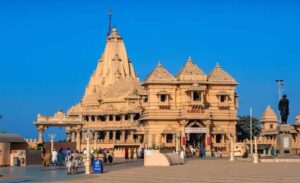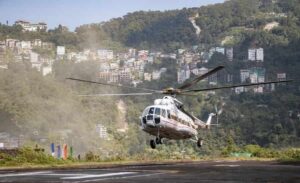Jhelum River – Jammu and Kashmir, India
- Region: Verinag, 80 km South of Srinagar, Jammu & Kashmir
- Main Attractions: The Bridges
The Jhelum River flows from Verinag, 80-km south of Srinagar, to the Wular Lake in the north. Passing through Srinagar it’s a wide, swift flowing, muddy looking river. The river draws water from the lakes around the city and many canals and rivers meander through the city area. The Jhelum River is famed for its nine old bridges although some of them are being replaced by more modern structures. The north stretch of the city is particularly picturesque with many fine views of Srinagar’s old buildings on the riverbanks. One’ll also find Srinagar’s most interesting old mosques along this stretch and since the roads are too narrow and winding for most vehicles it’s an interesting area to explore on foot or bicycle.
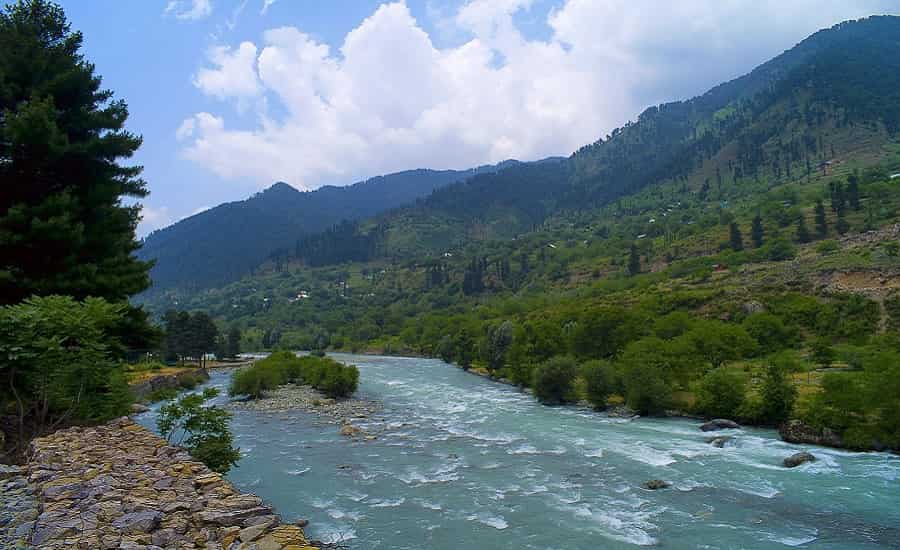
One can also take a Shikara along the river from Dal gate. The tour starts from Dal gate in a boat that firstly goes south along the canal connecting Dal Lake to the river. On the right is the golf course and on the left is the Srinagar Club where tourist visitors are welcome. Just beyond the club the canal enters the bridge immediately above the first bridge.
The first Jhelum Bridge, close to the tourist reception centre, is the zero bridge. Thus the next bridge is commonly known as the first bridge of the ‘old’ bridges. Built by Amir Khan it’s named the “Amira Kadal”. Between zero bridge and the Amira Kadal one drifts along beside the bund, past the government silk weaving factory on the opposite bank. Beyond that is situated the Shri Pratap Singh Museum.
The next bridge is the heavily trafficked modern Badshah Bridge and the Habba Kadal in the old part of town. On the left bank of the river, between these two bridges is the royal palace where the previous maharaja used to live. It’s set back some distance from the riverbank and is now a government building.
Nearby one will also find the new secretariat building and the Mahatma Gandhi Memorial Park. On the right side the Tsont-i-Kul or Apple Canal joins the Jhelum. This canal starts from the Dal gate and with a loop of the Jhelum makes part of Srinagar into an island. The busiest part of the old city is near the Habba Kadal Bridge, in an area where the national hospital and the Raghunath Mandir, Kashmir’s biggest temple and the twin of the golden-spired temple in Jammu also stand. The Fateh Kadal, the third old bridge, is just before the Shah Hamdan Mosque and a new bridge has recently been built just upstream from it. The Zaina Kadal is the next bridge and crosses the river close to the tomb of its builder, the famous Kashmiri ruler Zain-ul-Abidin.
The fifth bridge, the Ali Kadal, is named after his son. Finally there’s the Nawa Kadal and the Safa Kadal. A lesser-known mosque of Bulbul Shah is situated close to the Ali Kadal. Bulbul shah was a Kashmiri mystic and the first Muslim Fakir (saint) to visit the valley. The ruined Badshah mosque, close to the tomb of Zain-ul-Abidin, is enclosed by an old stonewall and there is a belief that the bricks of this mosque could cure smallpox. The Maharaja Ranbir Gang bazaar, an important trade centre, is also here.
The attractions at Jhelum River bridges is that just below the sixth bridge, the Nawa Kadal, one can see a canal enter the river; this is the Kota Canal, which diverts the river’s flow during a flood. It leaves the Jhelum between the Amira Kadal and the Habba Kadal. There’s the old Yarkand Sarai, a travelers resting place, by the seventh bridge, the Saffa Kadal. The Jhelum weir is just past this bridge and on the left bank are granaries of the Kashmir Valley Food Control Department. Also close by is the large open ground known as Idgah where prayers are held during the Muslim Id festival. At the Taski Kadal one can again leave the river on the Tsont-i-Kul canal and pass under the floodgate back to the Dal gate.
Since the river crosses all the provinces of Jammu and Kashmir, it has the benefit of an enormous significance amongst the diverse Lakes and Rivers of this state not only gushes through this state but also through Punjab and penetrates into Pakistan. As the years have passed River Jhelum has appeared as a key sightseeing pull over. Mangla Dam constructed on this river is 1 of the major water filled dams and a favorite tourist destination. River Jhelum diverges the stunning city of Srinagar into 2 parts. The magnificent lakes of Jammu and Kashmir are mostly supplied by water as of by Jhelum. The Jhelum River in its route obtains the form of a torrent and act as exquisite campsite location for trekkers and campers. The 9 bridges above the Jhelum River, which were constructed years before, also dish up as hot sightseeing destinations.
You must take a trip to these exotic and fun filled places to sense the real spirit of the vicinity.

